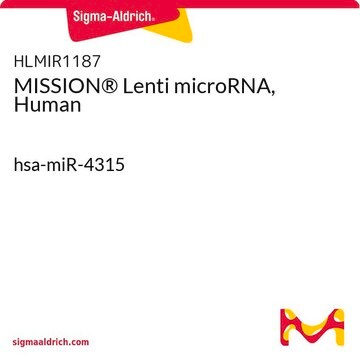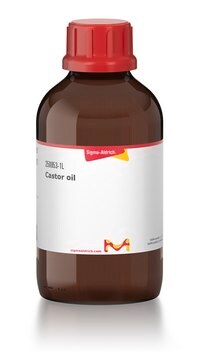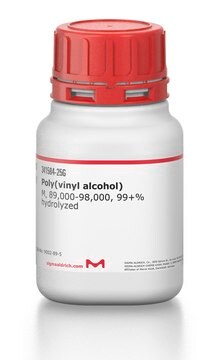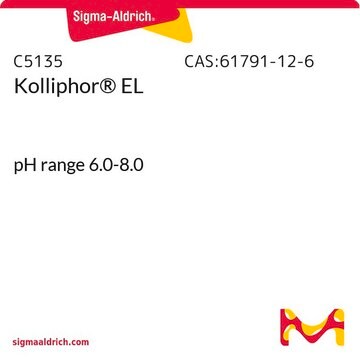S8281
Safflower seed oil from Carthamus tinctorius seed
Se connecterpour consulter vos tarifs contractuels et ceux de votre entreprise/organisme
About This Item
Numéro CAS:
Numéro CE :
Numéro MDL:
Code UNSPSC :
12352211
Nomenclature NACRES :
NA.25
Produits recommandés
Source biologique
plant seeds (Carthamus tinctorius)
Forme
liquid
Indice de réfraction
n20/D 1.476 (lit.)
Densité
0.921 g/mL at 25 °C (lit.)
Groupe fonctionnel
carboxylic acid
oleic acid
Type de lipide
oils
Conditions d'expédition
ambient
Température de stockage
room temp
Vous recherchez des produits similaires ? Visite Guide de comparaison des produits
Application
<ul>
<li><strong>Anti-osteoporosis effects of mammalian lignans and their precursors from flaxseed and safflower seed using zebrafish model:</strong> The study investigates the potential health benefits of safflower seed oil in preventing osteoporosis, highlighting its utility as a dietary supplement (Yang et al., 2023).</li>
</ul>
<li><strong>Anti-osteoporosis effects of mammalian lignans and their precursors from flaxseed and safflower seed using zebrafish model:</strong> The study investigates the potential health benefits of safflower seed oil in preventing osteoporosis, highlighting its utility as a dietary supplement (Yang et al., 2023).</li>
</ul>
Forme physique
Raw oil without preservative
Code de la classe de stockage
10 - Combustible liquids
Classe de danger pour l'eau (WGK)
awg
Point d'éclair (°F)
Not applicable
Point d'éclair (°C)
Not applicable
Équipement de protection individuelle
Eyeshields, Gloves
Faites votre choix parmi les versions les plus récentes :
Déjà en possession de ce produit ?
Retrouvez la documentation relative aux produits que vous avez récemment achetés dans la Bibliothèque de documents.
Les clients ont également consulté
Young Taek Oh et al.
Physiology & behavior, 167, 194-201 (2016-10-25)
Previous rodent studies showed that when injected into the brain, free fatty acids (FFAs) reduced food intake in an oleate-specific manner. The present study was performed to test whether food intake is regulated by circulating FFAs in an oleate-specific manner.
Takeshi Arai et al.
The Journal of nutritional biochemistry, 24(1), 267-273 (2012-08-21)
We investigated the effects of dietary fat energy restriction and fish oil intake on glucose and lipid metabolism in female KK mice with high-fat (HF) diet-induced obesity. Mice were fed a lard/safflower oil (LSO50) diet consisting of 50 energy% (en%)
Christopher M Mulligan et al.
Cardiovascular research, 94(3), 460-468 (2012-03-14)
Cardiolipin (CL) is a tetra-acyl phospholipid that provides structural and functional support to several proteins in the inner mitochondrial membrane. The majority of CL in the healthy mammalian heart contains four linoleic acid acyl chains (L(4)CL). A selective loss of
R A Gibson et al.
Prostaglandins, leukotrienes, and essential fatty acids, 88(1), 139-146 (2012-04-21)
The conversion of the plant-derived omega-3 (n-3) α-linolenic acid (ALA, 18:3n-3) to the long-chain eicosapentaenoic acid (EPA, 20:5n-3) and docosahexaenoic acid (DHA, 22:6n-3) can be increased by ALA sufficient diets compared to ALA deficient diets. Diets containing ALA above an
K G Lamping et al.
Diabetes, obesity & metabolism, 15(2), 144-152 (2012-09-07)
The ability of dietary enrichment with monounsaturated fatty acid (MUFA), n-3 or n-6 polyunsaturated fatty acids (PUFAs) to reverse glucose intolerance and vascular dysfunction resulting from excessive dietary saturated fatty acids is not resolved. We hypothesized that partial replacement of
Notre équipe de scientifiques dispose d'une expérience dans tous les secteurs de la recherche, notamment en sciences de la vie, science des matériaux, synthèse chimique, chromatographie, analyse et dans de nombreux autres domaines..
Contacter notre Service technique









